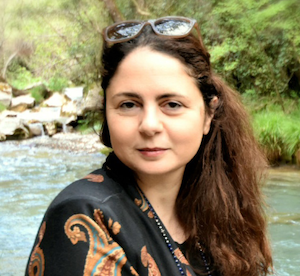The Refugee Trees: Treescapes as Intercultural Bridges
by Kostas Magos and Irida Tsevreni
Introduction
Forests, groves, and parks, as well as any area with trees, can be a suitable setting for helping develop students’ environmental knowledge and awareness. Even a single tree as a subject of thoughtful observation can give children opportunities for discussion around many issues, such as those of environmental protection, endangered species, human beings’ relationship with nature, and many more. There have been studies of innovative, experiential educational methods focusing on the interaction of children and young people with treescapes. These methods include different approaches, tools, and pedagogical techniques, such as nature journaling, mindfulness and contemplative techniques (Flowers et al., 2014; Tsevreni, 2021), art-based environmental education techniques (Hunter-Doniger, 2021), and ethnographic walks (Cele, 2019).
Trees can contribute to students’ intercultural awareness, as well as to their environmental awareness. Intercultural awareness concerns both specific skills, as well as attitudes and behaviors of students and teachers who demonstrate in the classroom that they can engage positively with cultural diversity in practice (Timoštšuk et al., 2022). In every culture, trees and plants have a particularly important place, and there are many myths, stories, and traditions associated with them. In that context, trees can provide many pedagogical opportunities for approaching and reflecting on different cultures. In addition, the great variety of trees that exist in the world and the diversity of trunks, leaves, and fruits and of colors and sizes are a constant stimulus for approaching the beauty that is created by diversity and the richness that emerges through the synthesis of differences.
Motivating children and also adults to observe the variety of trees and plants in the world around them and to appreciate the beauty created by the variety, as well as the harmonious coexistence of differences, also stimulates reflection about human diversity and the richness of multiculturalism. This process can be one of the many ways that can support intercultural awareness, which is the first step in developing respect, acceptance, and the desire to understand and interact with otherness. Besides, as Ramsey (2004) underlines, the relationship between intercultural and environmental awareness is particularly close. She makes reference to the environmental problems linked to the causes of immigration and refugeeism and the need for both children and adults to be aware of those connections.
 Kostas Magos is Associate Professor at the University of Thessaly in Greece. His scientific interests focus on the theory and praxis of critical intercultural education, refugee education, and activism in education.
Kostas Magos is Associate Professor at the University of Thessaly in Greece. His scientific interests focus on the theory and praxis of critical intercultural education, refugee education, and activism in education.
 Irida Tsevreni is an assistant professor in environmental education at the Department of Early Childhood Education of the University of Thessaly. She has designed and implemented numerous environmental education programs for all ages. Her research interests include environmental education, critical pedagogy of place, children’s participation, place-based education, holistic education, contemplative learning, human-nature relationship, plant-human relationships, ecophenomenology, and mindfulness in pedagogical praxis.
Irida Tsevreni is an assistant professor in environmental education at the Department of Early Childhood Education of the University of Thessaly. She has designed and implemented numerous environmental education programs for all ages. Her research interests include environmental education, critical pedagogy of place, children’s participation, place-based education, holistic education, contemplative learning, human-nature relationship, plant-human relationships, ecophenomenology, and mindfulness in pedagogical praxis.